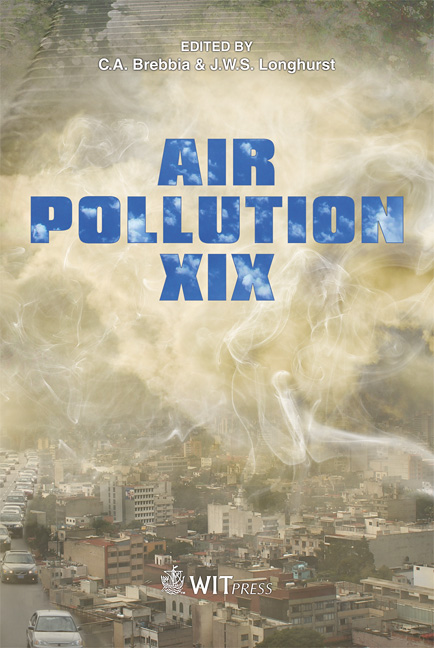Identification Of Potential Sources And Transport Pathways Of Atmospheric PM10 Using HYSPLIT And Hybrid Receptor Modelling In Lanzhou, China
Price
Free (open access)
Transaction
Volume
147
Pages
12
Page Range
59 - 70
Published
2011
Size
1,007 kb
Paper DOI
10.2495/AIR110061
Copyright
WIT Press
Author(s)
N. Liu, Y. Yu, J. B. Chen, J. J. He & S. P. Zhao
Abstract
Three-dimensional 4-day backward trajectories arriving at Lanzhou 500m above ground level were calculated every 6 h using HYSPLIT-4 trajectory model for spring (March, April and May) 2001 to 2008. The 8 years were divided into two categories: high dust years (2001, 2002, 2004 and 2006) and low dust years (2003, 2005, 2007 and 2008). Cluster analysis, potential source contribution function (PSCF) model, and concentration-weighted trajectory (CWT) method were used to evaluate the transport pathways and potential source regions affecting PM10 loadings in Lanzhou in spring season. Results indicate that the western and the northwestern pathways, accounting respectively 33% and 19.4% of all trajectories, were major pathways leading to high springtime PM10 loadings in Lanzhou during high dust years. However, the major pathways were the western and the northern pathways in low dust years, accounting for 23.6% and 18%, respectively. There were six potential source regions affecting PM10 concentration in Lanzhou, e.g. the Tarim Basin and the Turpan Basin in Xinjiang, the Qaidam Basin in Qinghai, the Hexi Corridor in Gansu province, the desert and Gobi areas in the middle and west of Inner Mongolia, and the Loess Plateau in the middle of Shaanxi province and eastern Sichuan. Keywords: HYSPLIT, PM10, trajectories, transport pathways, potential sources.
Keywords
HYSPLIT, PM10, trajectories, transport pathways, potential sources





